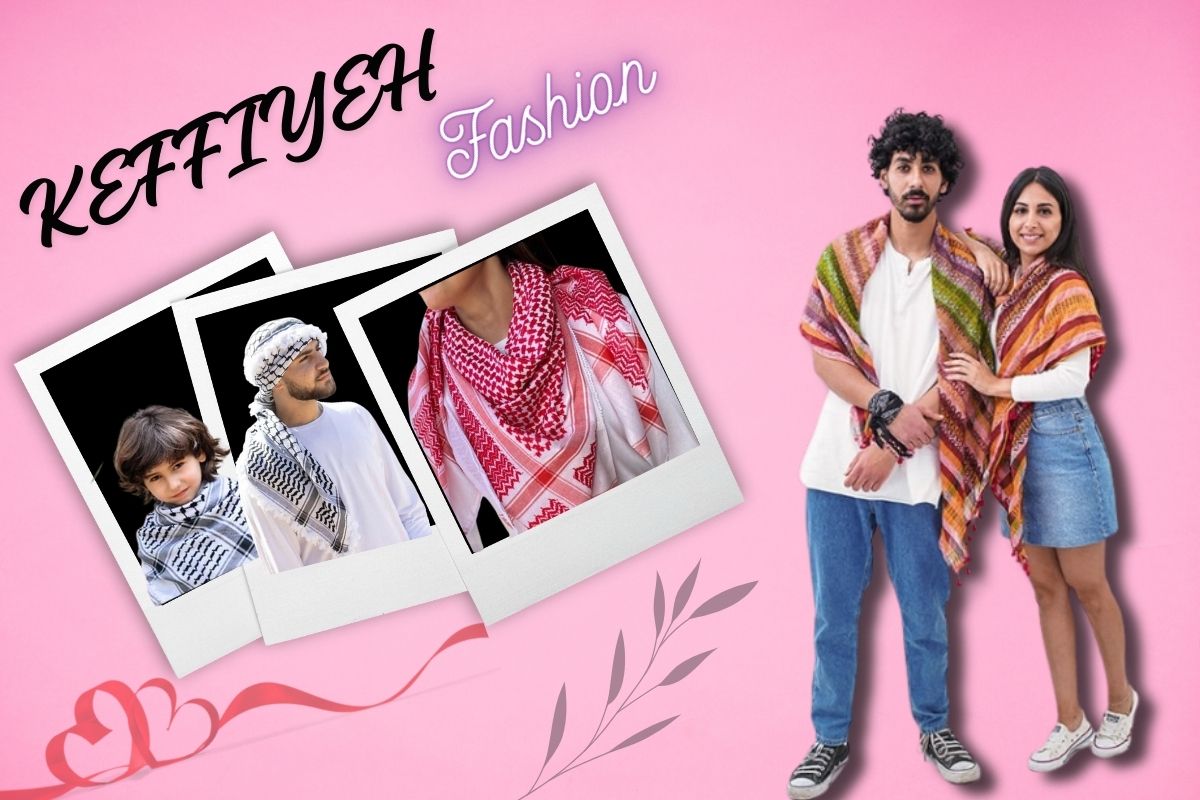The keffiyeh is way more than a mere headscarf; it reflects the epitome of Middle East traditional attire. From its roots in the centuries-old tradition, it evolved into an identity, resistance, and fashion symbol.
Traditionally crafted from cotton or wool, the keffiyeh is a piece of cloth in the shape of a square with various typical patterns normally held in place by an agal, which represents a black cord. This can be seen in the way it protects one from the hot desert sun while being a fashionable piece.
A Tapestry of Cultural Significance
As the keffiyeh made history, it became one rich tapestry interwoven with Middle Eastern cultures. Coming from ancient Mesopotamia, it became part of Bedouin life for centuries. The Bedouins depended on the keffiyeh for survival under the extreme conditions of the desert.
In the 20th century, it became a rag for Palestinian nationalism. It turned into a symbol of independence, worn by both sexes to show visible solidarity with their Palestinian struggle. Indeed, this political dimension has contributed to the keffiyeh’s worldwide recognition as an insignia of resistance and human rights.
The Many Faces of Keffiyeh
The cloth’s versatility is seen in this diversity of styles and patterns. While the traditional black-and-white checkered keffiyeh is widely recognized, there exists a rich array of variations to explore.
Saudi Keffiyeh: The Saudi keffiyeh are bold black and white checkered, usually with a red agal. It’s commonly worn by men in Saudi Arabia and other Gulf countries, and the red agal holds symbolic importance: it means courage and bravery.
Palestinian Keffiyeh: This white and black checkered design of the Palestinian keffiyeh has made it a worldwide symbol of resistance and solidarity. Worn by Palestinians and supporters alike, this cloth has become an emblem of the struggle for Palestinian rights and self-determination.
Bedouin Keffiyeh: Traditionally, these keffiyehs were made from camel hair and were pretty strong to bear the harsh conditions of the desert. These keffiyehs mostly come in earthly tones with simple designs and express the nomadism of the Bedouins.
Iraqi Keffiyeh: Commonly found in a brown or beige background and incredibly fine black patterns, the Iraqi keffiyeh stands out because of its intricacy in workmanship. The patterns contain shapes of geometric forms and floral motifs that reflect the rich culture of Iraq.
Syrian Keffiyeh: Traditionally composed of cotton, Syrian keffiyehs are usually red or orange in color with black or white patterns. These patterns are mostly influenced by nature; some of these motifs include palm trees, olive branches, stars, etc.
The Art of Wearing a Keffiyeh
A stylishly worn keffiyeh is an art in itself. Though there is no single size-fits-all way, this might give you an idea of how to wear it:
Fold
- Fold the keffiyeh into a triangle.
- Hold one side of the triangle on the back of your head.
- Take the two small ends and join them together in front of you.
- Wrap them under your chin.
Agal
You may add an agal should you want to maintain the headdress. Try experimenting with various folding and adjustments to wear according to your style, or better yet by basing on your facial structure.
The Keffiyeh: A Fashion Icon.
The keffiyeh has also had huge effects on the fashion world. The traditional patterns and colors of the keffiyeh have been used by numerous designers on clothes, accessories, and interior decoration. This use of old elements in modern fashion has largely contributed to the popularisation of the keffiyeh among people.
While definitely a style beefing item, it’s important to remember to wear a keffiyeh with both respect and appropriate cultural understanding. An education in the history and meaning behind this scarf truly provides an individual with a greater appreciation.
Caring for Your Keffiyeh
Here are care tips to ensure your Keffiyeh keeps looking awesome:
- Hand wash your keffiyeh with lukewarm water and mild detergent.
- Do not use any bleaching or wrapping products to avoid tough chemicals.
- Drying: Lay flat out of direct sunlight.
- Ironing: If needed, iron on low heat.
- Treat your Keffiyeh with care and make it your life companion.
Final Words
More than being a piece of cloth, the keffiyeh embodies a living, breathing heritage of history, culture, and identity. From the deserts of Arabia to the global fashion stage, this journey has been truly invigorating, something that has never lost its charm. Whether as a statement of pride in one’s culture or a style statement, the keffiyeh still charms hearts and minds everywhere.
















